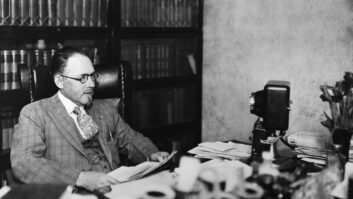Digital radio stations in the United States use an “in-band on-channel” (IBOC) technology that has both analog and digital components. These systems are subject to misalignment of the analog and digital audio signals. But a new technology idea being discussed within the National Radio Systems Committee promises to eliminate this problem.
The NRSC’s IBOC Standards Development Working Group or ISDWG, a sub-group of the Digital Radio Broadcasting subcommittee, has issued a request for information on the topic of “Encapsulation of Composite Audio (MPXA) within the Distribution and Communications Protocol (DCP).”
The RFI notes that three major digital radio standards — HD Radio, Digital Radio Mondiale (DRM) and Digital Audio Broadcasting (DAB) — all use the DCP protocol to provide application frames to exciter modulators for their digital signal (for example, see here for the DRM DCP specification).
The NRSC is considering defining profiles for sending the analog MPX signal (also referred to as the “FM baseband”) over DCP with application frames targeting analog FM modulator time slices that line up and can be linked with the digital audio simulcast delivered via another DCP stream with concurrent time slices.
It wants to hear from interested parties on questions like
- the feasibility of implementing analog FM-only links across typical studio-transmitter links using DCP uncompressed MPX;
- the feasibility of optionally adding or linking to an existing E2X transport stream for the HD Radio transmission that is time-aligned; and
- what physical channel implementations should be considered for standardization.
“It is the goal of this specification to provide a mechanism to provide the necessary application frames synchronously to a modulator without introducing a slip in differential time alignment for hybrid IBOC, as well as other standards. Strict locking of application frames at the modulator level ensures no differential time slip can occur from encoder to modulator.”
You can read the document here. Then email any comments to David Layer, VP, Advanced Engineering, NAB, at dlayer@nab.org by Dec. 15, 2022.
The National Radio Systems Committee is co-sponsored by the Consumer Technology Association and the National Association of Broadcasters.







